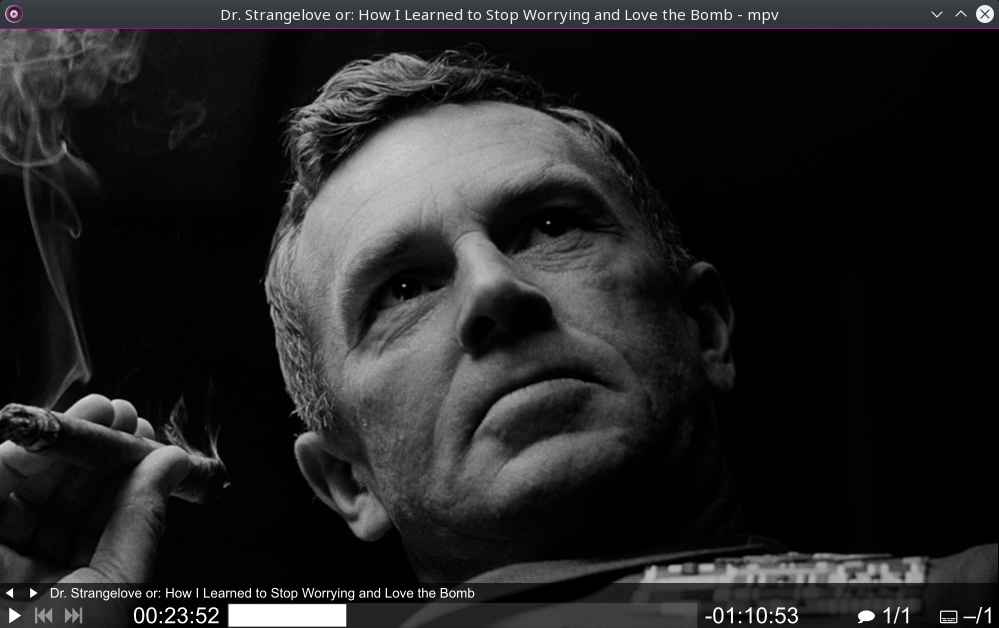MPV 0.32 video player released with RAR5 support and Bash completion feature. MPV is a command line video player for Linux Ubuntu Systems.
MPV is a video player based on MPlayer/mplayer2. It supports a wide variety of video file formats, audio and video codecs, and subtitle types.
Added
- stream_libarchive: enable RAR5 support
- bash completion: add initial implementation
- cocoa-cb: add support for forcing the dedicated GPU for rendering
- cocoa-cb: add pinch to resize window gesture
- w32_common: support minimizing/maximizing using osc window controls
Changed
- wayland: print warning on GNOME due to serious issues with their compositor
- player: write watch-later config even for unseekable streams
Removed
- vo_gpu: hwdec_vdpau: remove direct_mode
- vo_gpu: hwdec_vaegl: remove support for old-style interop
Options and Commands
Added
- command: add a playlist-unshuffle command
- command: add osd-dimensions property
- input: new PLAYONLY and PAUSEONLY keycodes
Fixes and Minor Enhancements
- lua: fix mp.file_info for large files
- vo_gpu: fix crash if dither texture fails to allocate
- wayland: unscrew up cursors, fix various issues
- osc: usability improvements for osc window controls
This listing is not complete. Check DOCS/client-api-changes.rst for a history
of changes to the client API, and DOCS/interface-changes.rst for a history
of changes to other user-visible interfaces.

Features:
- Streamlined CLI options – MPlayer’s options parser was improved to behave more like other CLI programs, and many option names and semantics were reworked to make them more intuitive and memorable.
- On Screen Controller – While mpv has no official GUI, it has a small controller that is triggered by mouse movement.
- High quality video output – mpv has an OpenGL based video output that is capable of many features loved by videophiles, such as video scaling with popular high quality algorithms, color management, frame timing, interpolation, HDR, and more.
- GPU video decoding – mpv leverages the FFmpeg hwaccel APIs to support VDPAU, VAAPI, DXVA2, VDA and VideoToolbox video decoding acceleration.
- Embeddable – A straightforward C API was designed from the ground up to make mpv usable as a library and facilitate easy integration into other applications.
- Active development – mpv is under active development, focusing on code refactoring and cleanups as well as adding features.
Install MPV on Ubuntu
Before you begin to install MPV, note the following system requirements for MPV:
- A not too ancient Linux, Windows 7 or later, or OSX 10.8 or later.
- A somewhat capable CPU. Hardware decoding might help if the CPU is too slow to decode video in realtime, but must be explicitly enabled with the –hwdec option.
- A not too crappy GPU. mpv’s focus is not on power-efficient playback on embedded or integrated GPUs (for example, hardware decoding is not even enabled by default). Low power GPUs may cause issues like tearing, stutter, etc. The main video output uses shaders for video rendering and scaling, rather than GPU fixed function hardware. On Windows, you might want to make sure the graphics drivers are current. In some cases, ancient fallback video output methods can help (such as –vo=xv on Linux), but this use is not recommended or supported.
Run the following commands in Terminal to install MPV Media Player on Ubuntu Linux:
sudo add-apt-repository ppa:mc3man/mpv-tests
sudo apt update
sudo apt install mpv
Once installed, open the MPV media player from Ubuntu Dash. Note that you won’t find any menu options. Simply drop the media file into the player window to play.
Generally, mpv should work with the latest release as well as the git version of both FFmpeg and Libav. But FFmpeg is preferred, and some mpv features work with FFmpeg only (subtitle formats in particular).
